He didn’t even hear what I said; he was absorbed already in the dilemmas of Democracy and the responsibilities of the West; he was determined . . . to do good, not to any individual person but to a country, a continent, a world.”
––Graham Greene, The Quiet American (1955)1
The purpose of this essay is to provide classroom instructors and other interested parties with a review of a range of readings, films, and documentaries about the Vietnam War. The eight areas presented explore the conflict in its complexity, from background to culture to the legacy for US foreign policy. The areas can be shaped into instructional units, with readings and films chosen with a secondary school or college audience in mind.
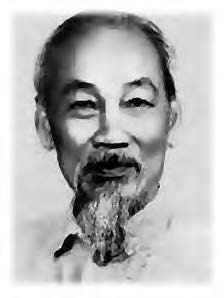 Vietnam’s French Colonial Background
Vietnam’s French Colonial Background
Before the American war came the French colonial experience, establishing Indochina as a far-flung colonial outpost, enriching the mother country while brutally suppressing resistance. From the 1870s to the 1950s, the French regime raised generations of Vietnamese civil servants, who developed cultural and intellectual ties with their occupiers. A class of Western-educated nationalists emerged in the twentieth century who denounced the foreign occupation and called for self-determination. Ho Chi Minh, the leader of the Vietnamese Communist Party, was in the forefront. Much of Ho’s popular appeal can be read and dissected in Bernard Fall’s edited volume, Ho Chi Minh on Revolution: Selected Writings, 1920–1966 (1967). These primary sources offer an idea of the hope Ho offered to so many Vietnamese who chafed and suffered under French domination. The best biography on Ho is William J. Duker’s Ho Chi Minh: A Life (2000). Graham Greene’s graceful novel, The Quiet American (1955), captures the mood of the French under siege, while foreshadowing the American experience. The French were defeated in 1954 by the communist Viet Minh.
A familiarity with the French colonial experience in Vietnam is important for Americans’ study, as the Americans ignored or misread the lessons from the French failure. The French war was also America’s initial entry, as the US funded 80 percent of the war by 1954, as a Cold War fight against communism. The first chapter of George C. Herring’s excellent work, America’s Longest War (1979), “A Dead-End Alley: The United States, France and the First Indochina War, 1950–1954,” is a fine introduction to France’s defeat and America’s entry onto the scene. Indeed, Herring’s book is well worth reading in its entirety, for both high school and college classes. In addition, for this first unit on the war I strongly recommend the 1983 PBS “American Experience” series, Vietnam: A Television History, beginning with Episode I: “Roots of a War (1945–1953).”
US Objectives in Cold War Context, the Case for the War and Reasons Lost
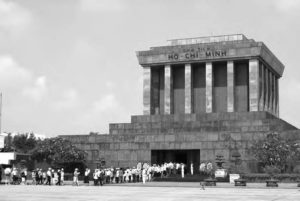
The rationale that led America into Vietnam must be placed firmly into the Cold War mindset. In the years after World War II, US policymakers perceived communism as a near-monolithic entity. Thus, the communist and anti-colonial struggle in Vietnam played upon US fears of communist global expansion: Russia, 1917; Eastern Europe and Poland, post-1945; China and North Korea, 1949; Tibet, 1951; North Vietnam, 1954; and Cuba, 1959. As Herring writes, although Indochina was considered by the Americans to be “important for its raw materials, rice, and naval bases . . . it was deemed far more significant for the presumed effect its loss would have on other areas,” otherwise known as “the domino theory.”2 If South Vietnam fell, then “Cambodia, Laos, Thailand, and Malaya (and then, successively, the Philippines, Indonesia, and Australia) would ‘fall to the Communists’ in their proper order.”3
The answer was the “containment doctrine,” established during the Truman administration, and pursued, with variations, on through the 1980s. Students would benefit from reading George Kennan’s 1946 “Long Telegram” sent from the US Embassy in Moscow to Washington, DC, in which Kennan argued that Soviet encroachments be contained at every opportunity, meeting force with force. Kennan’s telegram is a seminal document in Cold War history.4 Although the threat of communist expansion was the primary concern in Vietnam for Presidents Kennedy, Johnson, and Nixon, additional motives included US credibility and domestic political concerns, with administrations fearful of seeming to appease totalitarian aggression.
For a counterbalance to more mainstream histories, I also find useful Howard Zinn’s chapter, “The Impossible Victory: Vietnam,” in his classic polemic, A People’s History of the United States (1980). Zinn presents a critical leftist perspective, stressing US economic motives behind the nation’s overseas ventures. Focusing on the disconnect between official democratic principles and cynical self-interest, his work can be counted on to provoke lively class discussions.
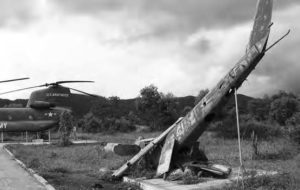
For documentaries, I strongly recommend Errol Morris’ The Fog of War, which won an Academy Award in 2003. The film presents a series of interview clips with Robert McNamara, Kennedy and Johnson’s Secretary of Defense and a key architect of the war. An eighty-five-year-old McNamara reflects on Vietnam, the danger of too much power, Cold War presumptions, and mistakes that were made, interspersed with combat footage.
While the antiwar movement opposed the basic tenets of why the US should involve itself in Vietnam, plenty of bipartisan foreign policy experts were firmly convinced that America was both morally and strategically justified in seeking to contain North Vietnam. Richard Nixon asserted in No More Vietnams (1985) that the conflict was no civil war, but rather, “the Vietnam War was the Korean war with jungles,” in which a hostile communist force “camouflaged its invasion to look like a civil war,” while undertaking a stream of ceaseless border crossings while supporting the Viet Cong.5 The American media and antiwar movement are both singled out by Nixon, but also the failure of the Kennedy and Johnson administrations to explain “what we were fighting for,” thus failing to secure enduring public support.6 Nixon also blamed the US Congress for allowing Saigon to fall in the two years following America’s withdrawal.
Nixon’s polemical book is useful in providing an alternate perspective to the antiwar critique, whether in explaining the US justification or in de-romanticizing Ho Chi Minh, whose 1950s agrarian policies sparked “major peasant revolts,” resulting in the deaths of 50,000 North Vietnamese.7 Additional arguments for support of the war are to be found in Robert F. Kennedy’s oral interviews in Robert Kennedy: In His Own Words: The Unpublished Recollections of the Kennedy Years (1991), edited by Edwin O. Guthman and Jeffrey Shulman, and in Lyndon Johnson’s memoir, The Vantage Point: Perspectives on the Presidency, 1963–1969 (1971).
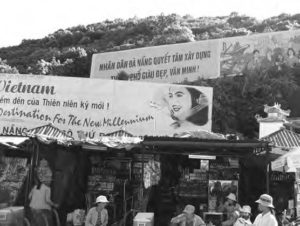
As arguments are studied for the war’s justification, so should debates be reviewed on why the war was lost. The issue of whether the American media helped lose the war and the theory of an “oppositional” media are discussed by Melvin Small in Johnson, Nixon, and the Doves.8 In Nixon Reconsidered (1994), a largely positive reevaluation, Joan Hoff reviews flaws in the 1973 peace agreement, which was essentially forced upon South Vietnam’s President Thieu, with Nixon threatening an “immediate termination of U.S. economic and military assistance” if Thieu did not sign the document.9
In We Were Soldiers Once . . . and Young, Retired Lt. Gen. Harold G. Moore in his final chapter, “Reflections and Perceptions,” singles out flaws in US military and political policy as to why America failed in Vietnam, including one-year tours of duty and frequent officer rotations. Failure also resulted from losing the hearts and minds of the populace by bombing heavily populated areas. “None of us,” Moore wrote, “had joined the Army to hurt children and frighten peaceful farm families.”10 Nor would the American people condone the ongoing losses as the years passed, despite superior firepower. Even with a “kill ratio of 10–1 or even 20–1” against the enemy, eventually Americans would demand that the troops come home, mission accomplished or not.11
The Face of War
As historian John Dower once wrote, “atrocities follow war as the jackal follows a wounded beast.”12 Vietnam was no different, and, like Dower’s own area of expertise on the Pacific War, the war in Vietnam was carried out between peoples of different races, languages, and cultures; cruelty, racism, and dehumanization followed in its wake. Certainly, atrocities occurred on both sides, from the 1968 massacre by US soldiers in the village of My Lai, to the mass executions by communist forces in the city of Hue during the 1968 Tet Offensive. For students to form an accurate perception of the face of the Vietnam War, works that present the American soldier’s experience should also include a feel for the camaraderie, the stultifying dullness, the struggles against heat, loneliness, brutality, loss, and fear.
Mark Baker’s Nam: The Vietnam War in the Words of the Men and Women who Fought There (1981) is a collection of veterans’ oral histories, at times starkly graphic, and cannot fail to hold students’ attention. “You can’t tell who’s your enemy,” one veteran recalled. “You got to shoot kids, you got to shoot women. You don’t want to. You may be sorry that you did. But you might be sorrier if you didn’t.”13 Other veteran accounts include Charlie Company: What Vietnam Did to Us (1983), with accounts gathered by reporters Peter Goldman and Tony Fuller; Philip Caputo’s A Rumor of War (1977); Dear America: Letters Home from Vietnam (1985), edited by Bernard Edelman; and Robert Mason’s Chickenhawk (1983), a fascinating account by a US helicopter pilot who flew more than one thousand combat missions in Vietnam. Of these works, Baker’s Nam is the most graphic, in terms of violence, language, and brutality, and thus should be read carefully by the teacher before the book is assigned, since the material is disturbing. For a popular fictional treatment, many fine examples exist, but perhaps the best remains Vietnam veteran Tim O’Brien’s The Things They Carried (1990).
On the other side, Bao Ninh’s The Sorrow of War (1991) is a novel by a North Vietnamese Army veteran. One of 500 soldiers who served in the North’s 27th Youth Brigade, and one of only ten who survived, Ninh was seventeen when he joined the war and twenty-three when it ended. His novel has become a literary classic. Nor did the decade following Hanoi’s victory bring the longed-for reconciliation for which many had hoped, as Truong Nhu Tang makes clear in A Viet Cong Memoir (1985), written with David Chanoff and Doan Van Toai. A former guerrilla who served as Minister of Justice after the war, Tang’s bitter disillusionment with postwar Vietnam eventually forced him into exile. For an excellent visual, the National Geographic documentary, Vietnam’s Unseen War: Pictures from the Other Side (2002), offers a series of interviews and photographs by North Vietnamese photographers, giving more of a face to “the faceless enemy” in the jungle.
For American POWs, the war included the nightmare of internment. A useful account of one American POW’s experience in Hanoi’s notorious French-built Hoa Lo Prison is Jeremiah A. Denton, Jr.’s When Hell Was in Session (1976). Lionel Chetwynd’s dramatic film, Hanoi Hilton (1987), offers stark images for viewers unused to seeing American POWs at the mercy of others. The documentary Return with Honor (2001), directed by Freida Lee Mock and Terry Sanders, depicts the POWs’ plight and their return to America.
The Antiwar Movement
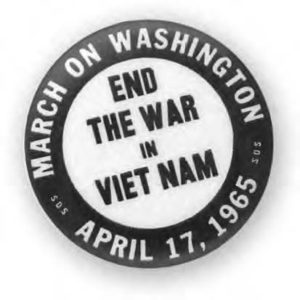
Much has been written on the anti-Vietnam War movement, and abundant films and documentaries are readily available. Two comprehensive tomes are Tom Wells’s The War Within: America’s Battle over Vietnam (1994), and Terry H. Anderson’s The Movement and the Sixties (1995). Born on the Fourth of July (1976) by Ron Kovic is an excellent choice for high school audiences, presenting Kovic’s journey from an all-American high school athlete who comes home from the war in a wheelchair and becomes a spokesman for the antiwar movement. The Sixties Papers: Documents of a Rebellious Decade (1984), edited by Judith Clavir Albert and Stewart Edward Albert, is an excellent compendium of primary sources that cover six main areas, from the cultural to the political and from the moderate to the extreme.
Although the dominant popular perception of the sixties generation depicts a “politically and socially rebellious” youth, a 1989 Gallup poll found otherwise. Among those surveyed who came of political age during the sixties, “large majorities . . . say they did not get involved in anti-war or civil rights movements, did not smoke marijuana on a regular basis or experiment with psychedelic drugs, and did not ‘dress like a hippie.’”14 Paul Lyons’ work, Class of ’66, is a wonderful corrective in this area. Indeed, as Godfrey Hodgson wrote in America in Our Time (1976), the 1968 “swing of public opinion against the war did not mean that the peace movement had succeeded in achieving its dream of mass conversion.”15 While a growing majority conceded that the war had become “a mess,” that did not mean they were ready to mount the barricades—far from it. Instead, the curious situation arose in which “most of those who disliked the war, disliked the peace movement even more.”16
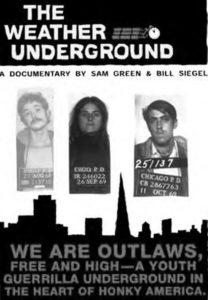
The collection Second Thoughts: Former Radicals Look Back at the Sixties is a useful resource containing reflections by three dozen former activists. A common theme in the section “Second Thoughts on Vietnam” is how, after 1975 and the ensuing communist repression in both Vietnam and Cambodia, many New Leftists who had cheered communist-driven wars of national liberation later ignored or sought to discredit reports that reflected poorly on the new communist regimes. As one writer stated, “such methods of imposing the Party’s power over a newly ‘liberated’ society have been a part of every Communist victory since 1917.”17 Another writer spoke of the inherent danger of romanticizing “the other side,” a pitfall experienced not only by the New Leftists but also by “old leftists” who glorified Stalin in the 1930s.18 A fine study on the evils that befell Cambodia and the danger of romanticizing guerrillas of any stripe is William Shawcross’s Sideshow: Nixon, Kissinger and the Destruction of Cambodia (1979), which indicts the Nixon administration for destabilizing fragile, neutral Cambodia, leading to the Khmer Rouge’s seizure of power and the genocidal slaughter of over a million Cambodians.
Perhaps the best documentary of the protest movement is Berkeley in the Sixties (1990), directed by Mark Kitchell. In the previously-mentioned Vietnam: A Television History series, the antiwar movement is portrayed in the episode “Homefront USA.” For a look at the most radical and violent protest group that arose from the sixties, The Weather Underground (2003), directed by Sam Green and Bill Siegel, shows the radicalization of a small band of revolutionaries who sought to bring down the US government, with their reflections thirty years later. Together these documentaries provide a fine cross-section of the protest movement, from those who advocated peace to those who sought to end the war and change society through far more violent means.
Culture Clash: America and Vietnam
The great cultural, linguistic, political, and historical differences that separated the Americans from the Vietnamese contributed to the war’s tragedy, fueled by the frustration that arose between mutually uncomprehending people. “America was involved in Vietnam for thirty years, but never understood the Vietnamese,” wrote Loren Baritz in his work Backfire (1985).19 Vietnamese men, for example, had the custom of holding hands in public with their friends. For American youths raised on John Wayne films, this practice repelled many GIs who felt that their Asian allies were either effeminate or cowards, prompting them to wonder “why Americans had to die in defense of perverts.”20 Baritz’s first chapter, “God’s Country and American Know-How,” is particularly informative as to the clash of cultures, though the entire book offers much insight.
Another excellent place to start for exploring cultural differences is Frances Fitzgerald’s landmark work, Fire in the Lake (1972), in which each culture’s view of the historical process differed, which affected their view of revolution. Traditional Vietnamese view history as cyclical, in keeping with their life as an agrarian-based people, while Westerners view history as a path of progression, with humanity emerging from a state of chaos to eventual order and stability. Thus, whereas Westerners tend to perceive revolution as “an abrupt reversal in the order of society, a violent break in history,” Vietnamese view it as “the cleansing fire to burn away the rot of the old order.”21 In Vietnam, Americans were in the unenviable position of supporting the old order, a pro-Western series of anti-communist governments, which the French had left in their wake. As for documentaries, Peter Davis‘s classic work Hearts and Minds (1974) presents tragic and starkly contrasting images of cultural differences and the Americans’ involvement in Vietnam. The film should be viewed in advance by the instructor due to images of violence and, more rarely, nudity.
The War and America’s Cinematic Memory: Reality, Fantasy, and Remorse
Far from the more “patriotic” films arising from the World War II and Korean War eras, such as Back to Bataan (1945), Sands of Iwo Jima (1949), and Pork Chop Hill (1959), the Vietnam-era films, with the exception of John Wayne’s The Green Berets (1968), are marked by a suspicion of authority in general––particularly military and political. This was the generation of writers and directors who learned of official lies during the war by Presidents Johnson and Nixon. Nixon’s own conduct of the war, including prolonged secret bombings of Cambodia by US warplanes, and capped off by the Watergate scandals, resulted in many Americans en masse experiencing a deep distrust of their government.
Beyond the political perspective of many of these films, Hollywood—and US citizens—were coming to terms with the kind of damage America had wrought on Vietnam, and the kind of harm inflicted on US soldiers, their families, and survivors. Out of a rich tapestry of films, part fantasy, part reality, and much soul-searching, many are worth noting, but I shall mention only a few. Francis Ford Coppola’s fanciful Apocalpyse Now (1979) offers an image of the American war effort’s descent into chaos, though it is likely to raise more questions than it answers. A harrowing depiction is Oliver Stone’s Platoon (1986), the director himself a Vietnam vet. The scene in which an entire Vietnamese village is nearly wiped out by tense, frustrated, and angry US soldiers recalls the My Lai massacre. Hamburger Hill (1987), directed by Jon Irvin, deals with a specific battle and is brutal in its realism. Coming Home (1978), directed by Hal Ashby, focuses on the hardship experienced by returning veterans and their families. At the end of the film a paraplegic vet, played by Jon Voight, delivers a speech to a high school audience that is particularly moving, in which he expresses remorse for actions taken while “killing for one’s country.”
Lessons learned (or not): “No more Vietnams”
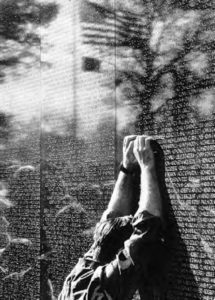
The anguish that the war inflicted upon the American psyche left a legacy that continues to impact US foreign policy, providing a ripe and relevant area for student research. In the thirty years since 1975, with each new military foray, cries are issued on the danger of the US finding itself once more in “another quagmire.” In his account of the Reagan presidency, as Reagan’s former Secretary of State, George Shultz bemoaned the “Vietnam syndrome.” “The Vietnam War had left one indisputable legacy,” Schultz wrote: “massive press, public, and congressional anxiety that the United States—at all costs—avoid getting mired in ‘another Vietnam.’”22 In 1991, after America and its allies succeeded in pushing Iraq’s Saddam Hussein out of Kuwait, President George H. W. Bush publicly declared, “we’ve kicked the Vietnam syndrome once and for all.”23 Yet, amid the Serbian and Croatian acts of genocide in the Balkans, Bush “was slow to act” due to “the ghosts of Vietnam” and “the great fear of being sucked into a Balkan quagmire.”24
Former antiwar protester Bill Clinton would himself face the Vietnam legacy in determining US foreign policy. Clinton pulled out the troops after eighteen US servicemen died in civil-war-torn Somalia. He experienced the same fears of over-engagement when he ordered limited air strikes on Serbia during the Bosnian and Kosovo conflicts, though he emerged successful and limited US objectives were achieved.
His successor, George W. Bush, went deeper. By December 2005, towards the end of the third year of Bush’s war in Iraq, with roughly 2,200 US soldiers dead, many politicians began calling for an exit strategy. “We are locked into a bogged-down problem not . . . dissimilar to where we were in Vietnam,” stated Nebraska Republican Senator Chuck Hagel, himself a highly decorated Vietnam veteran. “We should start figuring out how we get out of there.”25 Former Clinton Secretary of State Madeline Albright struck a middle ground, stating, “The American military [in Iraq] is both the problem and the solution. They are a magnet [for insurgents] but they’re also helping with security.”26 Democratic politicians attacked each other for fear of seeming weak.27 For his part, President Bush maintained that US forces in Iraq would emerge victorious, promising “complete victory,” in which US forces would eventually withdraw as Iraqi forces increased their level of readiness against the insurgency.28 As with Vietnam, politicians of both parties were increasingly caught between their record of past support, public discontent, perceived US interests, political vulnerability, and a faith in America’s potential for good amidst a sea of troubles.
Disputing Vietnam comparisons, military historian Victor Davis Hanson emphasizes that the number of US war dead in Iraq after two and a half years of war in no way approximated the far higher losses in World War II, Korea, and Vietnam. Since the 1970s, American expectations as to its own capabilities have increased. In a war that seeks to defeat guerrillas and where victories are not measured by ground taken, “our growing intolerance of any battlefield losses” will only meet with frustration when US wars are fought without quick and easy victories.29
Vietnam Today
As the communist forces neared Saigon in the spring of 1975, the US military’s Stars and Stripes predicted in a bold headline that “AT LEAST A MILLION VIETNAMESE WILL BE SLAUGHTERED.”30 The anticipated bloodbath did not come, though severe hardship and repression did. For an excellent firsthand account of the prisons and re-education camps under post-1975 communist rule in Vietnam, see The Vietnamese Gulag (1986), by Doan Van Toai and David Chanoff. What followed was an eventual “exodus of boat people, a transformative flotilla that would carry one million South Vietnamese—about five percent of the South’s population,” to lands overseas.31 It would take years before the country established a sense of normalcy.
I thus recommend closing the unit on the Vietnam War with a glimpse of Vietnam today, thirty years after the country’s reunification and the fall of Saigon. In addition to my own teaching and research over the years, my knowledge was greatly enhanced by a summer 2004 trip to Vietnam with Pacific Village Institute, led by John Eastman. I was most impressed by the sheer energy of the Vietnamese, their friendliness, optimism, and eagerness embracing newfound opportunities currently available through the government’s policy of increased economic liberalism and the encouragement of small private enterprise.
Whatever the instructor’s political views, whether judging Vietnam’s current economic trend as a cause for “free world” celebration or one of leftist utopian mourning, the fact remains that the Vietnamese standard of living and per capita income are both on the rise, after decades of economic mismanagement and stringent government control.32 Although censorship of the press and restricted civil liberties are as one would expect in a one-party state, a look at Vietnam at the dawn of the twenty-first century provides a positive area for students to discuss and an upbeat note to end on, in a unit that focuses on the grim reality of war. As veteran war reporter David Lamb stated in his excellent work Vietnam Now (2002), the cautious moves by the Vietnamese government have resulted in a country that “remains closer to impoverished Laos than it does to developing Thailand. Yet,” Lamb adds, “the Vietnamese have always had staying power and been good at capitalizing on opportunity; their country brims with potential.”33 This potential, which the country is in the process of realizing, is reason enough for an in-depth study of the Vietnam War, the Vietnamese people, and the nation they are becoming.
1. Graham Greene, The Quiet American (New York: Penguin Books, 1977), 18.
2. George C. Herring, America’s Longest War: The United States and Vietnam, 1950–1975, 2nd ed. (New York: Alfred A. Knopf, 1986), 14.
3. Frances Fitzgerald, Fire in the Lake: The Vietnamese and the Americans in Vietnam (Boston: Little, Brown and Company, 1972), 33.
4. David M. Kennedy and Thomas A. Bailey, The American Spirit, Vol. II: Since 1865, 10th ed. (Boston: Houghton Mifflin Company, 2002), 410.
5. Richard Nixon, No More Vietnams (New York: Arbor House, 1985), 47.
6. Nixon, 15.
7. Nixon, 43.
8. See Melvin Small, Johnson, Nixon, and the Doves (New Brunswick, NJ: Rutgers University Press, 1989), 231–33.
9. Joan Hoff, Nixon Reconsidered (New York: Basic Books, 1994), 235. See the section “How Not to End a War,” 231–37.
10. Lt. Gen Harold G. Moore (Ret.) and Joseph L. Galloway, We Were Soldiers Once . . . and Young: Ia Drang: The Battle that Changed the War in Vietnam (New York: HarperPerennial, 1993), 403–04.
11. Moore and Galloway, 406.
12. John Dower, War without Mercy: Race and Power in the Pacific War (New York: Pantheon Books, 1987), 12.
13. Mark Baker, Nam: The Vietnam War in the Words of the Men and Women who Fought There (New York: William Morrow and Company, 1981), 171.
14. Paul Lyons, Class of ’66: Living in Suburban Middle America (Philadelphia: Temple University Press, 1994), 103.
15. Godfrey Hodgson, America in Our Time (New York: Vintage Books, 1978), 392.
16. Hodgson, 393.
17. Peter Collier and David Horowitz, eds., Second Thoughts: Former Radicals Look Back at the Sixties (Lanham, Md.: Madison, 1989), 78–79.
18 Collier and Horowitz, eds., 90.
19. Loren Baritz, Backfire: A History of How American Culture Led Us into Vietnam and Made Us Fight the Way We Did (New York: Ballantine Books, 1986), 3.
20. Baritz, 6–7.
21. Fitzgerald, 30–31.
22. George Schultz, Turmoil and Triumph: My Years as Secretary of State (New York: Charles Scribner’s Sons, 1993), 294.
23. George C. Herring, “America and Vietnam: The Unending War,” Foreign Affairs, Winter 1991/92, www.foreignaffairs.org/19911201faessay6116/georgec herring/america-and-vietnam-the-unending-war.html.
24. David Halberstam, War in a Time of Peace: Bush, Clinton, and the Generals (New York: Simon & Schuster, 2002), 32.
25. Josh Meyer, “Republican Senator Says U.S. Needs Iraq Exit Strategy Now,” Los Angeles Times, August 22, 2005, A4.
26. Robin Wright, “Democrats Find Iraq Alternative Is Elusive,” Washington Post, December 5, 2005, A1.
27. Jim VandeHei and Shalaigh Murray, “Democrats Fear Backlash at Polls for Antiwar Remarks,” Washington Post, December 7, 2005, A1.
28. Paul Richter, “Bush Promises a U.S. Exit Linked to Iraqi Readiness,” Los Angeles Times, December 1, 2005, A1.
29. Victor Davis Hanson, “2,000 Dead, in Context,” New York Times, October 27, 2005, A31.
30. David Lamb, Vietnam Now: A Reporter Returns (New York: Public Affairs, 2002), 74.
31. Lamb, 78.
32. See, for example: Tracy Dahlby, “The New Saigon,” National Geographic, Vol. 187, No. 4, April 1995, 60–86; Mason Florence and Virginia Jealous, Vietnam (Victoria, Australia: Lonely Planet, 2004); Amy Kazmin, “Vietnam Gets in the Swing,” Los Angeles Times, August 8, 2005, C4; and Lamb, 70.
33. Lamb, 268.

